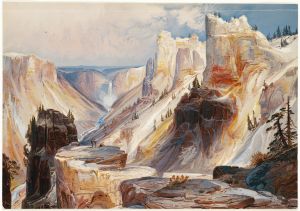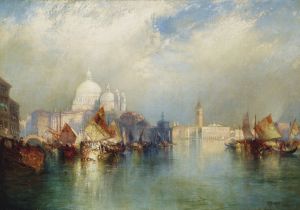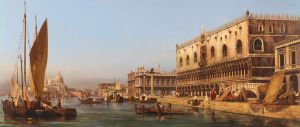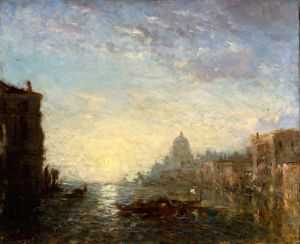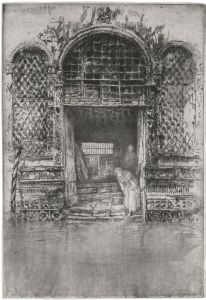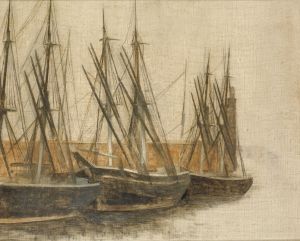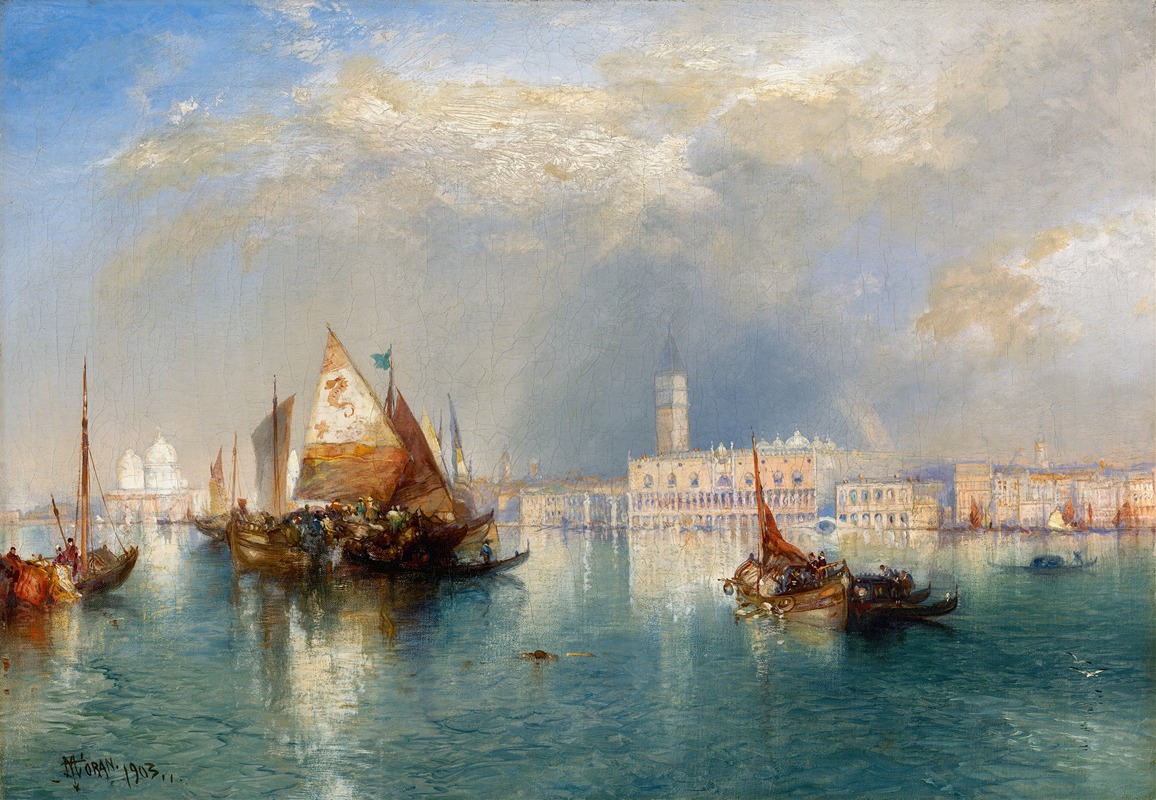
Venice
A hand-painted replica of Thomas Moran’s masterpiece Venice, meticulously crafted by professional artists to capture the true essence of the original. Each piece is created with museum-quality canvas and rare mineral pigments, carefully painted by experienced artists with delicate brushstrokes and rich, layered colors to perfectly recreate the texture of the original artwork. Unlike machine-printed reproductions, this hand-painted version brings the painting to life, infused with the artist’s emotions and skill in every stroke. Whether for personal collection or home decoration, it instantly elevates the artistic atmosphere of any space.
"Venice" by Thomas Moran is a notable painting created by the American artist Thomas Moran, who is renowned for his landscape paintings, particularly those depicting the American West. However, Moran also explored other subjects, including European landscapes, as evidenced by his work on Venice.
Thomas Moran was born in 1837 in Bolton, England, and immigrated to the United States with his family as a child. He became one of the prominent figures of the Hudson River School, a group of painters known for their romantic portrayal of the American landscape. Moran's work is characterized by its dramatic use of light and color, which he employed to capture the grandeur and beauty of nature.
In the late 19th century, Moran traveled to Europe, where he was inspired by the continent's rich artistic heritage and diverse landscapes. During his travels, he visited Venice, a city that has long captivated artists with its unique architecture, intricate canals, and vibrant atmosphere. Venice, with its blend of natural beauty and architectural splendor, provided Moran with a wealth of inspiration.
Moran's painting "Venice" reflects his fascination with the city's picturesque scenery. The artwork captures the essence of Venice, showcasing its iconic canals and historic buildings. Moran's use of color and light in the painting highlights the city's enchanting ambiance, with the interplay of water and sky creating a sense of tranquility and timelessness.
The painting is an example of Moran's ability to blend realism with romanticism. While he accurately depicts the architectural details and layout of Venice, he also infuses the scene with a sense of idealized beauty, characteristic of the romantic style. This approach allows viewers to experience the city not just as a physical location but as a place of imagination and wonder.
Moran's "Venice" is part of a broader tradition of artists who have been inspired by the city. Venice has been a subject for many renowned painters, including Canaletto, J.M.W. Turner, and James McNeill Whistler, each bringing their unique perspective to the city's timeless allure. Moran's contribution to this tradition is marked by his distinctive use of light and color, which sets his work apart.
The painting is housed in various collections, reflecting its significance in Moran's oeuvre and its appeal to art enthusiasts. Through "Venice," Moran not only pays homage to the city's beauty but also demonstrates his versatility as an artist capable of capturing diverse landscapes with equal skill and sensitivity.
In summary, "Venice" by Thomas Moran is a testament to the artist's ability to convey the charm and majesty of one of the world's most iconic cities. Through his masterful use of light and color, Moran invites viewers to experience Venice's unique atmosphere, bridging the gap between reality and romantic idealism.







